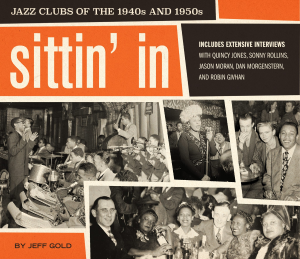.
.
.
…..Jeff Gold’s book Sittin’ In: Jazz Clubs of the 1940s and 1950s is a visual history of many of the country’s most influential night clubs and ballrooms during jazz music’s golden era.
…..The book is centered around a collection of memorabilia Mr. Gold discovered, and features photographs of club patrons taken by in-house photographers, as well as postcards, handbills, menus, matchbooks, and posters.
…..In cooperation with Mr. Gold, Jerry Jazz Musician will occasionally publish a noteworthy excerpt from the book. In this edition, Gold writes about two Harlem jazz clubs – Connie’s Inn and Smalls’ Paradise – and shares photographs and memorabilia from his collection.
.
(Editors note: Readers should keep in mind the context and complexity of the era in which these clubs existed)
.
.
___
.
.
Connie’s Inn
2221 Seventh Avenue at 131st Street
.
.
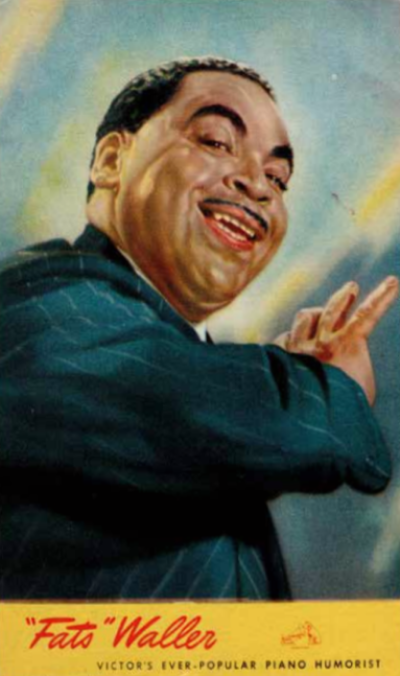
Fats Waller, who performed at Connie’s Inn and once worked for the Immerman’s deli, date unknown
.
.
…..
….Connie’s Inn was opened in 1923 by Latvian immigrant brothers Connie, George, and Louie Immerman, bootleggers and owners of a Harlem delicatessen (a nineteen-year-old Fats Waller had handled their deliveries). From the mid-1920s to 1930s, the basement club billed itself as “Harlem’s Largest” and was one of the area’s “big three” clubs, along with Smalls’ Paradise and the Cotton Club.
….Connie’s floor shows featured African American performers, but the club welcomed Black and white people alike. During 1929, the club’s peak year, Louis Armstrong performed as part of Carroll Dickerson’s Chicago orchestra, and that year’s floor show, Fats Waller and Andy Razaf’s Hot Chocolates (feature “Ain’t Misbehavin’”), was such a success it moved to Broadway’s Hudson Theatre.
….A period followed with Fletcher Henderson and His Connie’s Inn Orchestra, featuring Coleman Hawkins and Rex Stewart, and then bands led by Luis Russell and Don Redman. In 1933, with Harlem’s nightlife rush ebbing, the Immermans moved the club to a short-lived midtown location, presenting the revue Stars over Broadway, starring Billie Holiday (and when she became ill, temporary replacement Bessie Smith). But the repeal of Prohibition and the Depression hurt business, and soon Connie’s was forced to close.
.
.
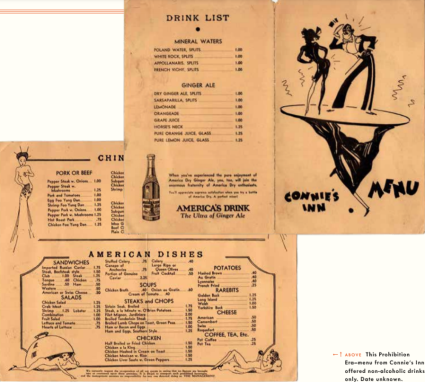
This Prohibition Era-menu from Connie’s Inn offered non-alcoholic drinks only. Date unknown
.
.
___
.
.
Smalls’ Paradise
2294 1/2 Seventh Avenue near 135th Street
.
.
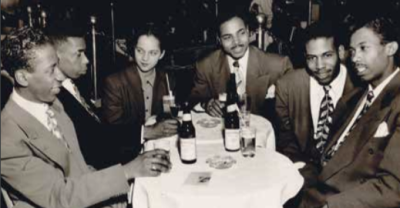
Patrons at Smalls’ Paradise, 1940s
.
.
…..Smalls’ Paradise, which billed itself as the “Hottest Spot in Harlem,” opened in the basement of an office building on October 26, 1925, quickly becoming one of Harlem’s most popular integrated nightclubs. Pianist Charlie Johnson’s group was the main attraction. In the ten years it was the house band, it featured at various times saxophonist Benny Carter and trumpeters Jabbo Smith and Sidney de Paris.
…..During the 1920s, the integrated club – also the longest-operating nightclub in Harlem – was the only major nightspot in the area owned by an African American, Ed Smalls.
…..The club, renowned for its top entertainment and elaborate floor shows, stayed open all night. While most clubs closed at two, three, or four A.M., Smalls’ offered a six o’clock breakfast dance and floor show. There was no cover charge, although prices for food and liquor were steep. Customers could bring in their own flasks or buy bootleg drinks from the club’s dancing waiters, who did the Charleston – sometimes on roller skates – as they toted large, heavy trays. After finishing their own shows at other clubs, musicians including future bandleaders Tommy Dorsey and Glenn Miller often dropped by Smalls’ to jam with the house band. In the early 1930s, a teenage Billie Holiday had her first audition at the club. When asked what key she wanted to sing in, Holiday answered, “’I don’t know, man, you just play.’ They shooed me out of there so fast it wasn’t even funny.”
…..The club became popular with celebrities, including actors Tallulah Bankhead and George Raft, boxing champion Joe Louis, and columnist Walter Winchell. Malcolm Little, who later became known as Malcolm X, worked at the club as a waiter in the early 1940s. In 1951, at a party sponsored by Albert Einstein, Paul Robeson, and others, civil rights activist W.E.B. DuBois celebrated his eighty-third birthday there.
…..In 1955, Ed Smalls sold the club to disc jockey Tommy “Dr. Jive” Smalls (no relation), who in turn sold it to basketball star Wilt Chamberlain in 1961. Chamberlain renamed the club Big Wilt-Smalls’ Paradise and changed the music from jazz to more commercial rhythm and blues. Smalls’ eventually became a disco club, finally closing in 1986.
.
.
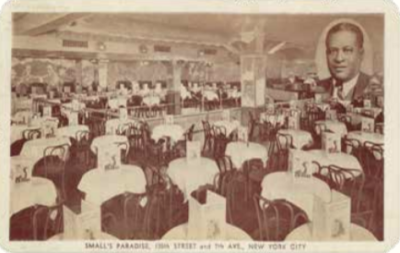 Smalls’ postcard, 1940s. Ed Smalls is pictured at top right
Smalls’ postcard, 1940s. Ed Smalls is pictured at top right
.
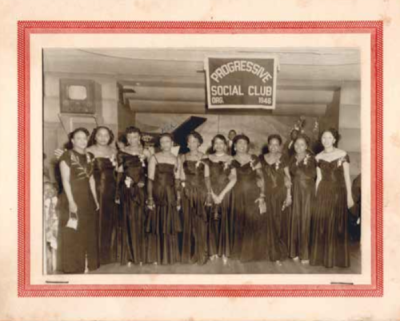
The Progressive Social Club at Smalls’, late 1940s
.
.
___
.
.
Click here to read Vol 1, on the Savoy Ballroom
Click here to read Vol 2, on Birdland
Click here to read Vol 3, on Club Ubangi
Click here to read Vol 4, Four Harlem Nightspots
Click here to read Vol 5, on Connie’s Inn and Smalls’ Paradise
.
Click here to read our interview with Jeff Gold
.
.
___
.
.
photo courtesy Jeff Gold

Jeff Gold is a Grammy Award-winning music historian, archivist, author, and executive. Profiled by Rolling Stone as one of five “top collectors of high-end music memorabilia,” he is an internationally recognized expert who has consulted for the Rock & Roll Hall of Fame, Museum of Pop Culture, and various record labels and cultural institutions. He has also appeared as a music memorabilia expert on PBS’s History Detectives and VH1’s Rock Collectors. His other books include 101 Essential Rock Records: The Golden Age of Vinyl from the Beatles to the Sex Pistols and Total Chaos: The Story of the Stooges/As Told by Iggy Pop. He own the music memorabilia website Recordmecca.com and writes about topics of interest to collectors on its blog.
Follow Jeff on Twitter at @recordmecca or on Instagram at @recordmecca.
.
.
___
.
.
All text and images — unless otherwise noted — © Jeff Gold. Excerpted from Sittin’ In: Jazz Clubs of the 1940s and 1950s (Harper Design). Published by permission of Jeff Gold.
.
.
.




